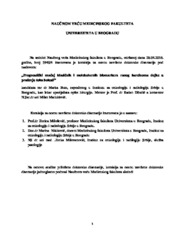Приказ основних података о дисертацији
Prognostički značaj klasičnih i molekularnih biomarkera ranog karcinoma dojke u praćenju toka bolesti
Prognostical value of classical and molecular biomarkers in the follow-up of early breast cancer
| dc.contributor.advisor | Džodić, Radan | |
| dc.contributor.other | Markićević, Milan | |
| dc.contributor.other | Milošević, Zorica | |
| dc.contributor.other | Nikitović, Marina | |
| dc.contributor.other | Milovanović, Zorka | |
| dc.creator | Buta, Marko N. | |
| dc.date.accessioned | 2016-12-30T16:13:41Z | |
| dc.date.available | 2016-12-30T16:13:41Z | |
| dc.date.available | 2020-07-03T08:47:38Z | |
| dc.date.issued | 2016-07-15 | |
| dc.identifier.uri | https://nardus.mpn.gov.rs/handle/123456789/7345 | |
| dc.identifier.uri | http://eteze.bg.ac.rs/application/showtheses?thesesId=4367 | |
| dc.identifier.uri | https://fedorabg.bg.ac.rs/fedora/get/o:14236/bdef:Content/download | |
| dc.identifier.uri | http://vbs.rs/scripts/cobiss?command=DISPLAY&base=70036&RID=48479759 | |
| dc.description.abstract | Uvod: Novi molekularni biomarkeri (uPA, PAI-1, katepsin D), uz klasične prognostičke markere, mogu biti korisni u prepoznavanju visoko-rizične podgrupe pacijenata u relativno dobroj prognostičkoj grupi pacijenata sa karcinomom dojke kod kojih nisu zahvaćeni limfni čvorovi (pN0). Pacijenti i metode: Procenjivana je prognostička vrednost urokinaznog plazminog aktivatora (uPA), plazminogen aktivator inhibitora-1 (PAI-1) i katepsina D u grupi postmenopauznih pacijentkinja operisanih zbog karcinoma dojke, kod kojih tumori pokazuju pozitivan steroidni receptorski status (estrogen receptor (ER)/progesteron receptor (PR), a kod kojih nije primenjivana adjuvantna terapija. Značaj biomarkera je analiziran tokom tri različita perioda praćenja. Analizirana su 73 uzorka citosolnog ekstrakta. Vrednosti ER i PR su odreĎivane klasičnom biohemijskom metodom, katepsin D radiometrijskim imuno-esejom a uPA i PAI-1 ELISA testom. Vrednosti HER 2 genske amplifikacije su odreĎivane hromogenom in situ hibridizacijom (CISH). Rezultati: Tokom ranog perioda praćenja (prvih pet godina nakon hirurškog lečenja) pacijenti sa veličinom tumora pT1 i niskim vrednostima PAI-1 (PAI-1<6.35 pg/mg) su imali bolju prognozu u odnosu na pacijente sa veličinom tumora (pT2,3) ili koji su imali visoke vrednosti PAI-1. Analizom 4 fenotipa definisanih veličinom tumora i PAI-1 statusom pokazano je da pacijenti koji imaju tumore veličine pT1, bez obzira na nivo PAI-1, ili koji imaju tumore veličine pT2,3 uz niske vrednosti PAI-1 imaju sličan DFI i dobru prognozu kao i pacijenti sa veličinom tumora pT2,3 uz visoke vrednosti PAI-1. Zakljuĉak: Veličina tumora u kombinaciji sa PAI-1 ima prognostički i moguće prediktivni značaj tokom ranog praćenja postmenopauznih pacijentkinja sa karcinomom dojke kod kojih tumori pokazuju pozitivan steroidni receptorski status (ER/PR), histološkog gradusa II. | sr |
| dc.description.abstract | Introduction: New molecular prognostic biomarkers (uPA, PAI-1, cathepsine D), together with classical prognostic markers, might be useful to select high risk subgroup of patients within relatively good prognostic group of breast carcinoma patients without metastases in lymph nodes (pN0). Patients and methods: We evaluated urokinase-type plasminogen activator (uPA) and plasminogen activator inhibitor-1 (PAI-1) prognostic value in postmenopausal, node-negative breast cancer patients bearing tumors with estrogen receptor (ER)/progesterone receptor (PR) expression, treated with locoregional therapy alone, within 3 different follow-up periods: first five years after surgical treatment, second five years and during the who period of ten years. We focused our analysis on tumors of histological grade II in order to improve its prognostic value and, consequently, to improve a decision making process. The cytosol extracts of 73 tumor samples were used for assessing several biomarkers. ER and PR levels were measured by classical biochemical method. Cathepsin D was assayed by a radiometric immunoassay while both uPA and PAI-1 level determinations were performed by enzyme-linked immunosorbent assays. HER-2 gene amplification was determined by chromogenic in situ hybridization (CISH) in primary tumor tissue. Results: During the early follow up patients bearing tumors smaller than or equal to 2 cm (pT1) or those with low PAI-1 levels (PAI-1<6.35 pg/mg) showed favorable outcome compared to patients bearing tumors greater than 2 cm (pT2,3) or those with high PAI-1 levels, respectively. Analyses of 4 phenotypes, defined by tumor size and PAI-1 status, revealed that patients bearing either pT1 tumors, irrespective of PAI-1 levels, or pT2,3 tumors with low PAI-1 levels, had similar disease-free interval probabilities and showed favorable outcome compared to those bearing pT2,3 tumors with high PAI-1 levels.Conclusion: Our findings suggest that tumor size and PAI-1, used in combination as phenotypes are not only prognostic but might also be predictive in node-negative, postmenopausal breast cancer patients bearing histological grade II tumors with ER/PR expression, during an early follow-up period. | en |
| dc.format | application/pdf | |
| dc.language | sr | |
| dc.publisher | Универзитет у Београду, Медицински факултет | sr |
| dc.rights | openAccess | en |
| dc.rights.uri | https://creativecommons.org/licenses/by-nc-nd/4.0/ | |
| dc.source | Универзитет у Београду | sr |
| dc.subject | biomarkeri | sr |
| dc.subject | biomarkers | en |
| dc.subject | prognoza | sr |
| dc.subject | loko-regionalna terapija | sr |
| dc.subject | pN0 | sr |
| dc.subject | prognosis | en |
| dc.subject | locoregional therapy | en |
| dc.subject | pN0 | en |
| dc.title | Prognostički značaj klasičnih i molekularnih biomarkera ranog karcinoma dojke u praćenju toka bolesti | sr |
| dc.title.alternative | Prognostical value of classical and molecular biomarkers in the follow-up of early breast cancer | en |
| dc.type | doctoralThesis | en |
| dc.rights.license | BY-NC-ND | |
| dcterms.abstract | Джодић, Радан; Милошевић, Зорица; Маркићевић, Милан; Миловановић, Зорка; Никитовић, Марина; Бута, Марко Н.; Прогностички значај класичних и молекуларних биомаркера раног карцинома дојке у праћењу тока болести; Прогностички значај класичних и молекуларних биомаркера раног карцинома дојке у праћењу тока болести; | |
| dc.identifier.fulltext | https://nardus.mpn.gov.rs/bitstream/id/8796/Disertacija.pdf | |
| dc.identifier.fulltext | http://nardus.mpn.gov.rs/bitstream/id/8797/Disertacija7148.pdf | |
| dc.identifier.fulltext | https://nardus.mpn.gov.rs/bitstream/id/8797/Disertacija7148.pdf | |
| dc.identifier.fulltext | http://nardus.mpn.gov.rs/bitstream/id/8796/Disertacija.pdf | |
| dc.identifier.rcub | https://hdl.handle.net/21.15107/rcub_nardus_7345 |



